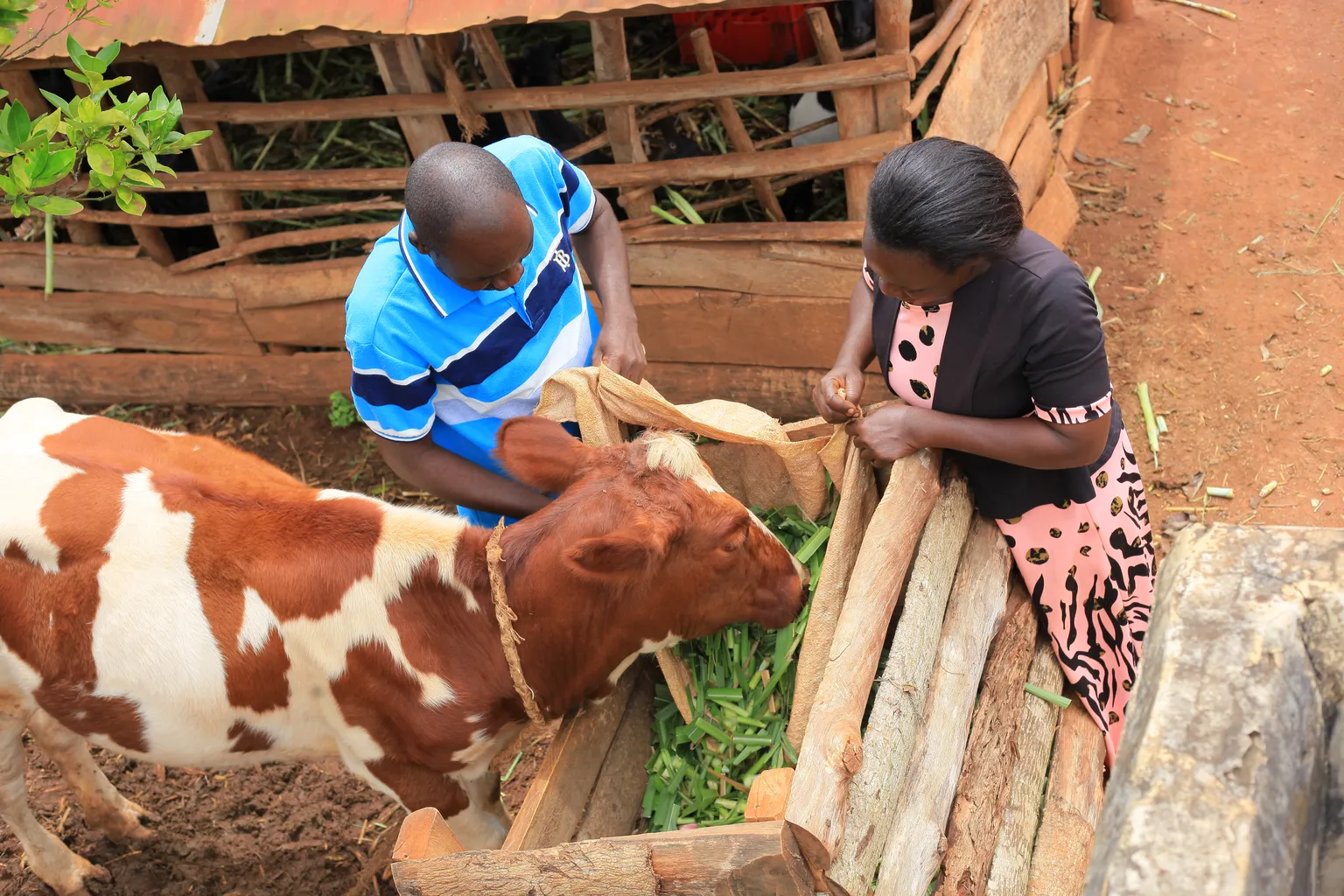From subsistence to sustainability: Inclusive farming transforms lives in Busoga

Rural communities across eastern Uganda live with some of the country’s highest poverty rates, limited market access, and degraded land. But they are also places where new approaches to farming often take root first—shaped by local knowledge, family networks, and the need to make every small plot count.
In Busanga, a village in Kamuli District, this shift is visible in the fields of Wabaire Annet, 44, and her husband, Abedinego Waiswa, 52. For years, the couple relied almost entirely on sugarcane, like many families in the area. It offered short-term income but little food security. “Our land was covered with cane,” Annet says. “There was no room for food crops, and the animals grazed wherever they could.” Each person worked their own patch of land, and decisions about sales rested almost entirely with her husband.
Over time, and through many conversations at home and within their community, the family began rethinking how they used their land. Discussions about nutrition, school fees, soil exhaustion, and the strain of depending on one crop encouraged them to look at farming as a shared responsibility. With support from the Participatory Integrated Planning (PIP) approach, they started exploring how crops, livestock, and soil management could fit together in a more balanced system.
Removing the sugarcane was a major decision, but it allowed the family to rebuild their plot in a way that made sense to them. Bananas, beans, vegetables, and fodder grasses began to thrive. Animal manure, once treated as waste, became a valuable resource—reviving the soil and improving harvests.

What this shift looks like in daily life
The changes in the household are steady and practical. A bunch of bananas now sells for up to UGX 15,000, while vegetables provide a daily income. Their two goats have multiplied into ten. The piggery has grown to six pigs, and selling a few has helped pay school fees. The family now keeps eight chickens and maintains a kitchen garden that earns at least UGX 6,000 a day from spinach and amaranth (locally known as dodo).
These different parts of the farm reinforce one another—livestock feed the soil, crops feed the family, and small sales provide stability.
With savings and UGX 1 million earned through the Parish Development Model (PDM), Annet bought a dairy cow to further improve the family’s diet and income. Local leaders, including the Resident District Commissioner, Lazaro Magezi, and the sub-county chief, Joanitah Tabingwa, have visited the farm to understand what is working on the ground.
Her seven children are healthier and now share responsibility for managing the crops and animals. “Even when we are away, our children know what to do. Farming is now a family business,” Annet says.
This short film showcases the early progress of the project, featuring smallholder farmers and local community leaders as they share their experiences and aspirations.
Inspiring change
The changes have drawn interest from neighbours. In nearby Busanga Central, Nabirye Juliet, 40, explains: “I was inspired by how Annet integrates her crops and animals. I planted bananas, started a piggery, and began using manure in my gardens. Even my children sell vegetables when I’m away.”
This kind of neighbour-to-neighbour learning is becoming a key driver of change. Village Learning and Linking Groups (VLLGs) give farmers space to share what works and adapt ideas to their own circumstances.
Busoga still faces serious pressure—74.8% of its population is considered poor and insecure —and climate shocks continue to undermine progress. The INCLUDE project, funded by the Embassy of the Kingdom of the Netherlands, supports communities by strengthening skills, facilitating planning, and helping farmers connect to markets. Its core is the PIP approach, which encourages households to build long-term visions and learn through practice.
For families like Annet’s, the shift is both personal and practical. “We no longer live in fear of food,” she says. “We can plan, earn, and provide for our children.” Her goals now include expanding her herd, completing her permanent home, and encouraging more neighbours to adapt mixed farming in ways that work for them.
Across Busoga, stories like hers show that resilience often starts quietly—in households testing new ideas, leaning on community relationships, and making careful use of what the land can still offer. When families guide their own change, the effects reach far beyond a single plot, strengthening local food systems one decision at a time.
We no longer live in fear of food,” she says. “We can plan, earn, and provide for our children.”
Wabaire Annet